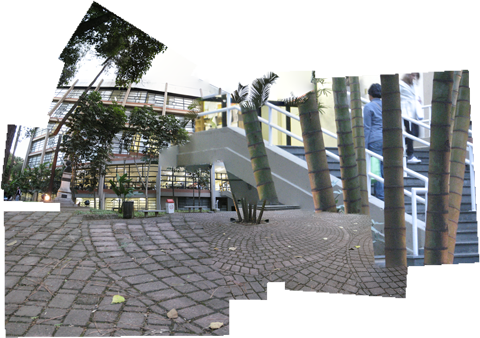Espaços Públicos Comparados: Arquitetura Simbólica em Áreas Destinadas ao Terciário Avançado nos Casos de São Paulo e Cidade do México
Palavras-chave:
espaços públicos, terciário avançado, arquitetura simbólicaResumo
Está sendo desenvolvida na Faculdade de Arquitetura e Urbanismo da Universidade Presbiteriana Mackenzie a pesquisa “Reconfigurações espaciais: um estudo de cidades ibero-americanas em perspectiva comparada: São Paulo e Cidade do México”. Procura-se analisar nas áreas destinadas ao setor terciário avançado em ambas as cidades estudadas (eixo sudoeste de São Paulo – Av. Luiz Carlos Berrini e Santa Fé Business District, Cidade do México) a relação entre a arquitetura e os espaços públicos influenciados pelo processo de globalização. Nos dias atuais, pesquisas como esta se demonstram importantes para fundamentar o ensino crítico de arquitetura e urbanismo e instrumentalizar projetos e políticas públicas urbanas. Este tema de investigação é capaz de estimular inovações em diferentes disciplinas de graduação, como Planejamento Urbano e Teoria e História da Arquitetura. Possibilita também a compreensão dos fenômenos que estão ocorrendo nestes espaços do ponto de vista do meio ambiente, procurando identificar as conseqüências que aqueles desenhos urbanos impõem às suas cidades, como extensos congestionamentos, descuido com a qualidade do espaço público, dificuldades de coleta de lixo, ausência de áreas verdes e de desenho dos espaços intersticiais, e de espaços de permanência e de circulação de pedestres e de ciclistas. Entre estes, também se verifica que os edifícios não foram projetados para abrigar serviços de modo geral destinados à população trabalhadora nas áreas estudadas, levando a conflitos de circulações de carga e consumidores. As políticas públicas não prevêem um projeto urbano adequado que equacione esses elementos e os códigos de obras não estão ajustados às essas novas necessidades sem descuidar das questões de insolação, ventilação, básicas para o bom funcionamento do ambiente construído. Este artigo tem por objetivo traçar as primeiras comparações entre a relação entre uma expressiva concentração de atenção aos valores simbólicos da arquitetura nesses espaços e a ausência dessa atenção à qualificação dos espaços públicos que estruturam esses locais. Estas comparações se baseiam em levantamentos já efetuados em ambas as áreas estudadas. Espera-se contribuir assim para maior conhecimento de situações como as descritas e fundamentação do ensino de disciplinas afins. [Trabalho apresentado na Conferência Latino-Americana de Faculdades e Escolas de Arquitetura na Guatemala, em novembro de 2007]Downloads
Downloads
Publicado
Como Citar
Edição
Seção
Licença
Autores que publicam nesta revista concordam com os seguintes termos:
a) Autores mantém os direitos autorais e concedem à revista o direito de primeira publicação, com o trabalho simultaneamente licenciado sob a Licença Creative Commons Attribution que permite o compartilhamento do trabalho com reconhecimento da autoria e publicação inicial nesta revista.
b) Autores têm autorização para assumir contratos adicionais separadamente, para distribuição não-exclusiva da versão do trabalho publicada nesta revista (ex.: publicar em repositório institucional ou como capítulo de livro), com indicação de que foi publicado originalmente nesta revista, com link para o artigo.








 Todo o conteúdo de Cadernos de Pós-Graduação em Arquitetura e Urbanismo está licenciado sob
Todo o conteúdo de Cadernos de Pós-Graduação em Arquitetura e Urbanismo está licenciado sob 